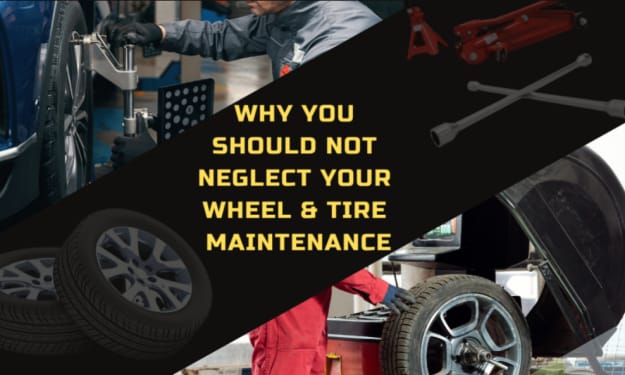
When it comes to maintaining your vehicle's performance and safety, one of the critical decisions you'll have to make is choosing the right set of tyres. Tyres play a significant role in your vehicle's overall performance, including handling, comfort, fuel efficiency, and safety. Among the various factors that influence your tyre choice, one of the most fundamental distinctions is between radial and bias-ply tyres. In this comprehensive guide, we'll explore the key differences between these two tyre types to help you make an informed decision for your vehicle.
The Basics: Radial vs. Bias Tyres
Before diving into the intricacies of radial and bias-ply tyres, it's essential to understand the fundamental differences between the two.
Radial Tyres
1. Construction: Radial tyres are constructed with layers of cord plies that run perpendicular to the direction of travel (across the tyre's width). These cord plies are typically made from steel or other materials known for their strength and durability.
2. Sidewall Flexibility: Radial tyres have flexible sidewalls that allow them to flex independently of the tread. This flexibility helps in maintaining better traction and handling on various road surfaces.
3. Performance Benefits: Radial tyres are known for their superior performance characteristics. They offer better grip, improved fuel efficiency, and a smoother ride compared to bias-ply tyres. They also generate less heat during operation, contributing to their longer lifespan.
4. Recommended Use: Radial tyres are commonly used in passenger cars, SUVs, trucks, and most modern vehicles due to their superior performance and fuel efficiency.
Bias-Ply Tyres
1. Construction: Bias-ply tyres have cord plies that run diagonally across the tyre's tread, creating a crisscross pattern. These cord plies are typically made from materials like polyester, nylon, or rayon.
2. Sidewall Flexibility: Bias-ply tyres have stiffer sidewalls compared to radial tyres. This stiffness can provide better resistance to punctures and cuts but may result in a harsher ride.
3. Performance Benefits: Bias-ply tyres excel in heavy-duty applications, such as off-road and agricultural vehicles, where their robust construction can handle rugged terrain and heavy loads.
4. Recommended Use: Bias-ply tyres are commonly found in specialty vehicles like tractors, forklifts, and trailers, as well as in off-road and agricultural equipment.
Now that we've covered the basic differences between radial and bias-ply tyres, let's delve deeper into the specific aspects that can help you decide which type is the right choice for your vehicle.
Performance Characteristics
Traction and Handling
One of the most significant differences between radial and bias-ply tyres is how they handle traction and provide stability. Radial tyres offer superior traction and handling performance due to their flexible sidewalls. The flexible sidewalls allow the tread to maintain better contact with the road surface, resulting in improved grip when cornering and better stability during emergency maneuvers.
On the other hand, bias-ply tyres, with their stiffer sidewalls, may not offer the same level of traction and handling as radial tyres. They are more suitable for applications where stability and resistance to punctures are paramount rather than high-speed performance.
Ride Comfort
Radial tyres are known for providing a more comfortable ride due to their flexible sidewalls. The flexibility allows them to absorb road irregularities and bumps, resulting in a smoother and quieter driving experience. This is especially important for passenger cars and SUVs, where ride comfort is a significant consideration.
Bias-ply tyres, with their stiffer construction, may transmit more vibrations and road noise to the vehicle's cabin, resulting in a less comfortable ride. However, this stiffness can be an advantage in heavy-duty applications where durability and load-bearing capacity are essential.
Fuel Efficiency
Radial tyres are more fuel-efficient compared to bias-ply tyres. The flexible sidewalls and reduced rolling resistance of radial tyres help improve fuel economy. If you're looking to reduce your vehicle's fuel consumption and carbon footprint, radial tyres are the better choice.
Bias-ply tyres, while durable, often have higher rolling resistance due to their stiffer construction. This can lead to increased fuel consumption, making them less suitable for vehicles where fuel efficiency is a concern.
Durability and Longevity
Radial Tyres
Radial tyres are known for their longevity. The construction of radial tyres results in less heat buildup during operation, which helps extend their lifespan. Additionally, their flexible sidewalls reduce wear and tear on the tyre, further contributing to their durability. Radial tyres are an excellent choice for drivers who want a long-lasting tyre option.
Bias-Ply Tyres
Bias-ply tyres are built to withstand heavy loads and harsh conditions. Their robust construction and stiffer sidewalls make them resistant to punctures and cuts, making them an ideal choice for off-road and agricultural applications. While bias-ply tyres may not last as long as radial tyres on the highway, they excel in situations where durability is paramount.
Specialized Applications
Radial Tyres
Radial tyres are the go-to choose for most passenger vehicles, including cars, SUVs, and trucks. They provide the necessary performance characteristics for on-road driving, including traction, handling, and comfort. Additionally, radial tyres are commonly used in high-performance and sports cars due to their superior grip and stability at high speeds.
Bias-Ply Tyres
Bias-ply tyres find their niche in specialized applications where durability and load-bearing capacity are crucial. These tyres are commonly used in off-road vehicles, agricultural equipment, construction machinery, and heavy-duty trucks. Their ability to handle rough terrain and heavy loads makes them invaluable in these situations.
Price Considerations
When it comes to pricing, bias-ply tyres are generally more budget-friendly than radial tyres. This cost difference can be attributed to the materials used in their construction and the manufacturing processes. However, it's essential to keep in mind that the lower initial cost of bias-ply tyres may be offset by their shorter lifespan and reduced fuel efficiency.
Radial tyres, while typically more expensive upfront, offer better value over the long term due to their extended lifespan and fuel savings. It's essential to consider your budget and your specific driving needs when making a decision based on price.
Choosing the Right Tyres for Your Vehicle
Now that you have a comprehensive understanding of the differences between radial and bias-ply tyres, how do you decide which type is right for your vehicle? Here are some key factors to consider:
1. Vehicle Type
Consider the type of vehicle you drive. If you have a passenger car or an SUV used primarily for on-road driving, radial tyres are the better choice. They offer the traction, handling, and comfort needed for daily commuting and highway driving.
For off-road vehicles, agricultural equipment, or heavy-duty trucks, bias-ply tyres may be more suitable due to their durability and resistance to punctures.
2. Driving Conditions
Think about the typical driving conditions you encounter. If you mainly drive on well-maintained roads and highways, radial tyres are the way to go. They provide the best performance on smooth surfaces and are more fuel-efficient.
If your driving involves rough terrain, construction sites, or off-road adventures, bias-ply tyres are designed to handle these challenging conditions with ease.
3. Load and Towing Requirements
Consider the load-carrying capacity of your vehicle and whether you frequently tow trailers or heavy loads. Radial tyres are suitable for most standard load-bearing requirements. However, if you have specialized needs involving heavy loads, bias-ply tyres offer the necessary durability and strength.
4. Budget
Evaluate your budget for tyre replacement. While bias-ply tyres may be more budget-friendly upfront, you may end up spending more over time due to their shorter lifespan and reduced fuel efficiency. Radial tyres often provide better value in the long run.
5. Personal Preferences
Your personal preferences and driving style also play a role in your tyre choice. If you prioritize a comfortable and smooth ride, radial tyres are the better option. However, if you value durability and reliability in challenging conditions, bias-ply tyres may be more appealing.
Conclusion
Choosing between radial and bias-ply tyres is a critical decision that can significantly impact your vehicle's performance, safety, and operating costs. To make the right choice, consider your vehicle type, driving conditions, load requirements, budget, and personal preferences.
In most cases, radial tyres are the preferred choice for passenger cars and standard on-road driving due to their superior traction, handling, and fuel efficiency. On the other hand, bias-ply tyres excel in specialized applications where durability and resistance to punctures are essential, such as off-road, agricultural, and heavy-duty settings.
Ultimately, the right tyre choice will enhance your driving experience, improve safety, and contribute to the overall performance of your vehicle. To ensure the best results, consult with a tyre specialist or your vehicle manufacturer for specific recommendations tailored to your needs. With the right tyres, you can enjoy a smoother ride, better fuel efficiency, and peace of mind on the road.
About the Creator
Tyre Hub
TyreHub is the one stop solution to buy Car Tyres, Bike and Activa tyres online with the best price offers in Ahmedabad and get them delivered at your doorstep. For more information visit https://www.tyrehub.com/ or call us 8141335551






Comments
There are no comments for this story
Be the first to respond and start the conversation.